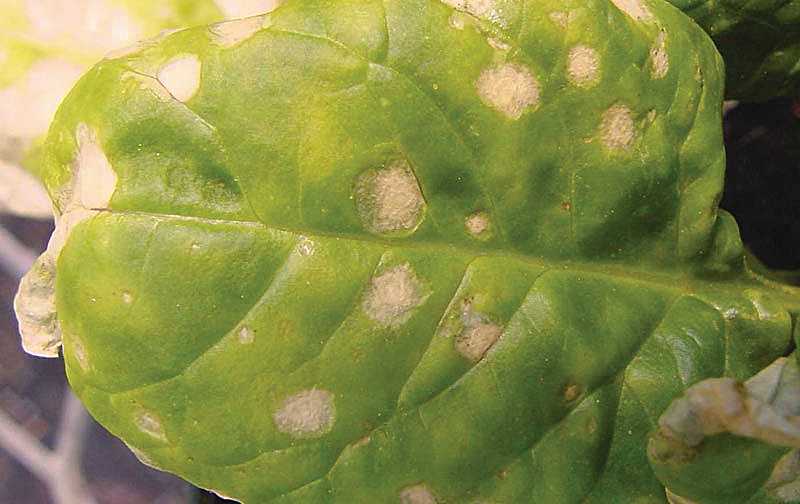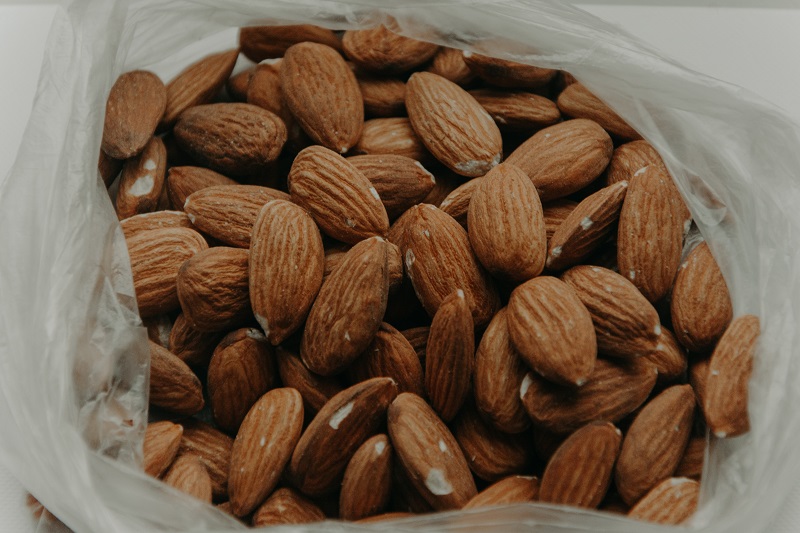Don’t Let Stemphylium Leaf Spot Stump Your Spinach Crop

Photo by Lindsey du Toit
Disease Specs
Caused by the fungal pathogen Stemphylium botryosum f. sp. Spinacia, this disease was initially reported in the U.S. in 1997 in limited spinach acreage in the Salinas Valley of California. By 2005, Stemphylium leaf spot was reported in fresh market spinach crops in Delaware, Maryland, Florida, Quebec, and Arizona.
Identification
Initial symptoms of Stemphylium leaf spot consist of small spots (0.13-inch to 0.25-inch diameter) that are circular to oval in shape and gray/green in appearance. As the disease progresses, the leaf spots enlarge, remaining circular to oval in shape, and turning tan in color.
Older leaf spots may coalesce, dry up, and become papery in texture, resulting in necrosis of significant portions of the leaves.
Since quality standards for fresh market spinach are extremely high, this disease poses a threat for growers who need to produce high-quality and defect-free products.
Visual signs of fungal growth are generally absent from the spots; hence Stemphylium leaf spot is readily differentiated from other foliar diseases of spinach in which purple growth (downy mildew), green spores (Cladosporium leaf spot), or acervuli (anthracnose) develop within circular lesions.
Since the symptoms resemble the tan, circular spots caused by pesticide or fertilizer damage and signs of the fungal pathogen are absent, this disease may be initially overlooked.
Survival and Spread
Weeds or other reservoir hosts for the fungus have not been identified. This pathogen is seed-borne. The implementation of very high density plantings of spinach may have contributed to an increase in incidence and severity of this disease.
Once established in a field, splashing water and free moisture likely aids in the distribution of S. botryosum conidia and creates conditions favorable for infection and disease development.
While S. botryosum is often considered a weak pathogen or secondary decay organism on other crops and at least 16 different non-spinach plants and are known to be susceptible to an S. botyosum pathogen, S. botryosum f. sp. Spinacia appears to be host specific.
Studies have demonstrated that the spinach isolates are primary pathogens and can cause significant crop damage. More recent studies demonstrate that isolates of S. botryosum from spinach infect only spinach, and other S. botryosum isolates from other sources do not infect spinach. These findings indicate the spinach pathogen may be a distinct subpopulation of S. botyosum, which affects only spinach.
Management Methods
No spinach cultivar is completely resistant (immune) to the disease. However, research has indicated that significant differences in both incidence and severity of the disease exist among different cultivars.
Hot water or chlorine treatment of seed may help reduce incidence of seed-borne transmission of S. botryosum, but will not reliably eradicate the pathogen from the seed.










